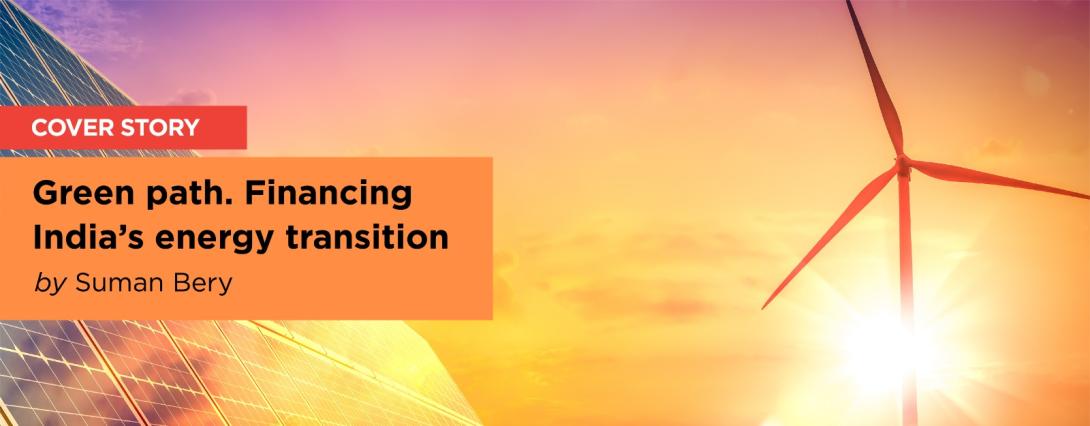Financing India’s energy transition
In establishing NITI Aayog in 2015 Prime Minister Narendra Modi aligned India with the practice in advanced market democracies, moving from centralised allocation of financial resources to indicative planning.
Under his steady chairmanship, over the last eight years NITI Aayog has evolved a diverse tool kit to implement this changed role both at the Union Government level, and in India’s States and UTs.
Within the overall framework of Team India (represented by NITI’s Governing Council) and deploying the philosophy of cooperative and competitive federalism, NITI has established several mechanisms. Recent initiatives include the launch of an Aspirational Blocks Programme; and increased capacity to respond to requests from States to modernise their planning ministries within the framework of NITI’s State Support Mission.
Across the board, NITI’s rules of engagement are to initiate, pilot and monitor, and not to execute, while striving to be a credible resource for all constituents of the Indian Union.
While this apparatus remains a work in progress, it will receive perhaps its most searching test in supporting India through its multi-decade energy transition. Important building blocks of this transition have become clearer since the landmark decision of the Prime Minister in 2015 to commit India to the global decarbonisation effort under the Paris Agreement, further reinforced by India’s commitment to net-zero by 2070 at Glasgow in 2021.
The broad elements of India’s decarbonisation strategy are now clear: increasing electrification; higher penetration of cleaner fuels in the energy mix; accelerated adoption of energy efficient technologies; rising digitalisation; improved material efficiency, including determined moves toward a circular economy. We have come a considerable distance since 2015. India today stands at number four in the world in installed renewable capacity (after China, US, and Germany).
States’ disparities
The energy transition is only one of the many challenges that India needs to address in its journey to becoming a developed nation by 2047, and there is significant disparity across States that needs to be addressed as well. All these challenges will require investment resources, mostly in the public sector although some will also be needed by the private sector. The discussion that follows focuses particularly on those flows that entail an increase in aggregate public sector debt.
The nature of the financing challenge for many emerging markets, India included, has been well summarised in a recent working paper of the Brookings Institution. The paper titled ‘Debt, Creditworthiness and Climate’, notes that many developing countries have accumulated public debt as an appropriate response to the pandemic.
Under normal circumstances they should slowly be restoring fiscal discipline so as to restore their credit scores. Indeed, this is the default trajectory anticipated under the Fiscal Responsibility and Budget Management legislation at the level of both the Centre and the States.
Citing Lord Stern of the London School of Economics (among others), the Brookings paper argues that the urgency of the climate change challenge (together with the human capital deficit created by the pandemic) creates the need for a major incremental investment push, potentially as much as four percentage points of GDP over currently relatively subdued levels, sustained over decades, with the potential to boost medium-term growth.
Emerging markets’ dilemma
The dilemma facing emerging markets is therefore the following: “Should developing countries retrench to preserve economic stability as they would in normal times… or should they invest to adjust to the economic realities of the 21st century, even at the risk of running up more debt? Which strategy best preserves creditworthiness?”
Not surprisingly the answer to the question depends both on initial conditions in each country, but also on the terms on which additional financing is available. This leads to the paper’s main argument, which is that the international official sector, notably the multilateral development banks, need enormously to expand the scale of their lending, thereby reducing the cost of external finance, for such an investment push to be feasible.
It is against this background that the medium-term financing issues facing India need to be considered, both in the near term, as represented by the forthcoming Union Budget, and over the longer term as usually considered by successive finance commissions.
The Brookings argument is at best suggestive, but it does suggest an agenda for both analysis and action. Its core macroeconomic insight is that if financing terms are reasonable then creditworthiness can be maintained at a high investment, high growth steady state as a more cautious trajectory of fiscal consolidation.
It seems to me that this argument is tenable under three rather demanding conditions. First, the policy regime at both the Centre and the States must assure high quality investment. Second, the financial markets buy into this story so that India’s private sector is not penalised by a deterioration in India’s credit rating.
Third, that the effective fiscal cost of multilateral borrowing is not materially affected by its foreign currency denomination.
In terms of an agenda for action, NITI could work more closely with States to come up with assessment of the quality of public investment while India’s G20 Presidency could work in the finance track to explore the realism of a major expansion in the lending capacity of the multilateral development banks, starting with the World Bank Group.
The writer is Vice-Chairman, NITI Aayog. Views expressed are personal
SOURCE: https://www.thehindubusinessline.com/opinion/financing-indias-energy-transition/article66451480.ece
 National Portal Of India
National Portal Of India 


